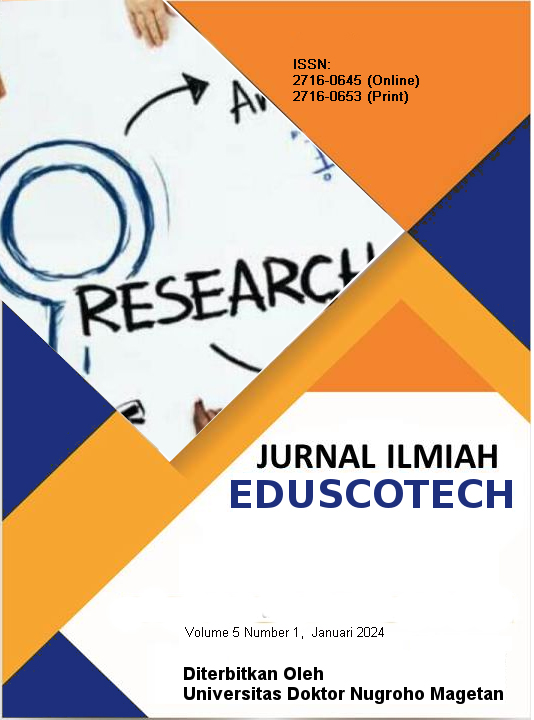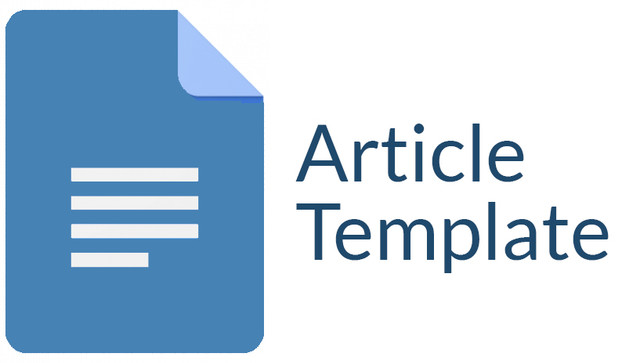Penerapan Metode Struktural Analitik Sintetik Sebagai Upaya Meningkatkan Ketrampilan Membaca Permulaan Siswa Kelas 1 SDN Sugiwaras 1
Keywords:
Synthetic Analytical, Beginning Reading Skills, Reading Skills EnhancementAbstract
This study aims to examine the application of the Structural Analytical Synthetic (SAS) method in improving early reading skills in grade 1 students of SDN Sugiwaras 1. Early reading learning is an important aspect in elementary education that requires an effective method to help students recognize and master basic reading concepts. The SAS method was chosen because of its systematic and structured approach, which allows students to analyze and synthesize words directly, making it easier for them to understand letters, syllables, and words in a complete context. This study uses a Classroom Action Research (CAR) design which is implemented in two cycles. Each cycle consists of four stages: planning, implementation, observation, and reflection. Data were collected through observation, pretest and posttest, and documentation. Data analysis was carried out using a quantitative approach to measure the improvement of students' reading skills, and a qualitative approach to analyze the results of observations and reflections from each cycle. The results showed that the application of the SAS method can improve the early reading skills of grade 1 students of SDN Sugiwaras 1. This improvement can be seen from the average score of students who experienced a significant increase in the posttest after the SAS method was implemented. In addition, observations of student behavior also showed an increase in interest and motivation in reading activities. This study concluded that the Structural Analytical Synthetic method can be used as an alternative effective method in improving early reading skills in grade 1 of elementary school. The researcher also suggested that teachers adapt this method by paying attention to the individual needs of students and actively involving students in each stage of learning.
Downloads
References
Kemendikbudristek. (2022). Panduan Pembelajaran Literasi di Sekolah Dasar. Jakarta: Direktorat Jenderal GTK.
Mulyati, T., & Pratama, A. R. (2018). Peningkatan Kemampuan Membaca Permulaan Siswa Melalui Media Gambar Berseri. Jurnal Pendidikan Dasar, 9(1), 12–19.
Nurhadi, & Senduk, M. (2017). Pengembangan Kemampuan Membaca Permulaan. Bandung: Remaja Rosdakarya.
Marsini, M. (2023). The Effectiveness of the E-Library as a Learning Resource for Elementary School Students' Social Studies in Improving Literacy Skills. AL-ISHLAH: Jurnal Pendidikan, 15(3), 3726-3736.
Marsini, M. (2023). Motivasi Belajar Siswa pada Pembelajaran IPS di SDN Kraton VI Maospati. Jurnal Educatio FKIP UNMA, 9(1), 302-309.
Purwaningsih, L., Hadianti, A., & Marsini, M. (2022). PROTOTYPE DESIGN FLIPBOOK MEDIA IN TEACHING GRAMMAR “SIMPLE PAST TENSE”. Indonesian EFL Journal, 8(2), 287-294.
Rahmawati, E. (2023). Efektivitas Metode SAS dalam Pembelajaran Membaca Permulaan di Sekolah Dasar. Jurnal Pendidikan Bahasa dan Sastra, 18(2), 135–144.
Rahmawati, E. (2023). Efektivitas Metode SAS dalam Pembelajaran Membaca Permulaan.
Jurnal Pendidikan Bahasa dan Sastra, 18(2), 135–144.
Sanjaya, W. (2019). Strategi Pembelajaran Berorientasi Standar Proses Pendidikan. Jakarta: Kencana.
Santrock, J. W. (2018). Child Development (14th ed.). New York: McGraw-Hill Education. Sari, R. N., & Susanti, H. (2021). Penerapan Metode SAS untuk Meningkatkan Kemampuan
Membaca Permulaan. Cakrawala Pendidikan, 40(1), 88–97.
Sari, R. N., & Susanti, H. (2021). Penerapan Metode Struktural Analitik Sintetik untuk Meningkatkan Kemampuan Membaca Anak Usia Dini. Jurnal Cakrawala Pendidikan, 40(1), 88–97.
Setiawan, R., Lestari, N., & Hidayati, Y. (2022). Strategi Guru dalam Meningkatkan Literasi Membaca pada Siswa Kelas Rendah. Jurnal Pendidikan Dasar Nusantara, 8(3), 220–229.
Setiawan, R., Lestari, N., & Hidayati, Y. (2022). Strategi Literasi Membaca di Kelas Rendah.
Jurnal Pendidikan Dasar Nusantara, 8(3), 220–229.
Sulistyo, T. (2020). Permasalahan Membaca Permulaan di Kelas I SD. Jurnal Ilmu Pendidikan Dasar, 5(2), 115–122.
Suyatno, & Hasanah, N. (2020). Permasalahan Pembelajaran Membaca Permulaan pada Siswa Sekolah Dasar. Jurnal Inovasi Pendidikan, 11(2), 101– 110.
Widodo, H. (2019). Tantangan Guru dalam Pembelajaran Literasi di Kelas Awal Sekolah Dasar.
Jurnal Guru Kita, 5(2), 75–84.
Downloads
Published
Issue
Section
License

This work is licensed under a Creative Commons Attribution-ShareAlike 4.0 International License.
Authors who publish with this journal agree to the following terms:
1. Copyright on any article is retained by the author(s).
2. The author grants the journal, right of first publication with the work simultaneously licensed under a Creative Commons Attribution License that allows others to share the work with an acknowledgment of the work’s authorship and initial publication in this journal.
3. Authors are able to enter into separate, additional contractual arrangements for the non-exclusive distribution of the journal’s published version of the work (e.g., post it to an institutional repository or publish it in a book), with an acknowledgment of its initial publication in this journal.
4. Authors are permitted and encouraged to post their work online (e.g., in institutional repositories or on their website) prior to and during the submission process, as it can lead to productive exchanges, as well as earlier and greater citation of published work.
5. The article and any associated published material is distributed under the Creative Commons Attribution-ShareAlike 4.0 International License









